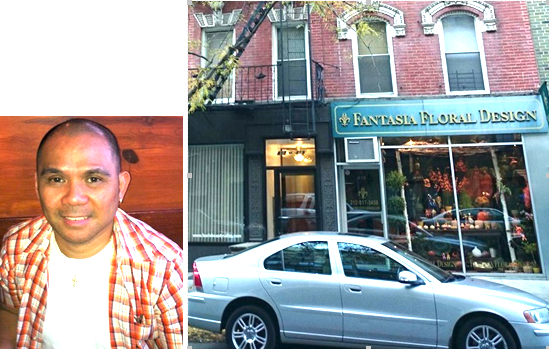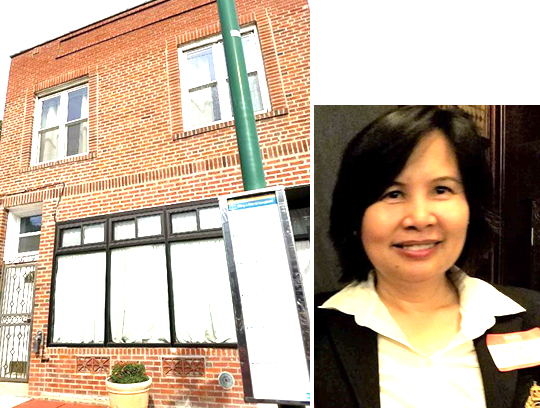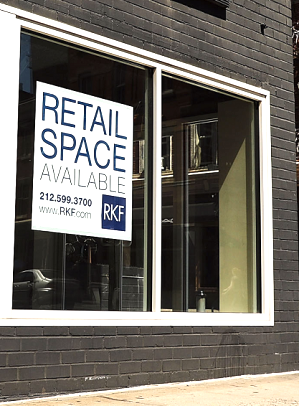Fil-Am businesses adapt as rents, e-commerce buffet NYC’s retail sector
NEW YORK — For 20 years, Fantasia Floral Design was an Upper East Side flower shop that catered to Manhattan’s high society. Until April of 2016. Owner Dennis Josue did not renew his lease because the landlord wanted to raise his rent by 3 percent. He was paying $5,200 a month for a 300-square foot space.
“I’m certainly not working for the landlord so I decided to give up retail,” he told The FilAm.
Today, Dennis runs a much leaner operation through his website he now calls The Floral Den. His devoted clients at Fantasia (a regular at polished magazines Town & Country and Architectural Digest) have stayed with him.
Accountant Jaena Valles has a different case altogether. The Valles Vendiola LLP tax and consulting office, where she is one of the principals, has moved out of Queens not because of rising rent. She decided to buy her own office building in the Bronx “for bigger space and control.”

After 20 years, Dennis Josue decided not to renew the lease on his flower shop in Manhattan’s Upper East Side. THE FILAM
“No, I did not experience rising rent,” she told The FilAm. “On the contrary, (my landlord) had a problem finding renters.” She said the surge of online shopping has resulted in an exodus of brick and mortars and an oversupply of retail space.
Dennis and Jaena are two successful Filipino American business owners with different approaches to issues that threaten New York City’s retail sector.
Their experiences reflect correctly the conditions described in a December 2017 study entitled “Planning for Retail Diversity: Supporting NYC’s Neighborhood Businesses.” The research, prepared by the New York City Council, acknowledged the challenges facing storefronts and concluded “all is not well with our city’s retail sector.”
The research explains the three major challenges that are “squeezing out” local businesses: rising rent and competition with chain stores, unhealthy retail mix in low-income neighborhoods, and the growth of e-commerce.
Some of the recommendations discussed in the study:
- Require storefront vacancy reporting;
- Study the impact of e-commerce on the brick-and-mortar retail sector;
- Create a new supply of commercial spaces for low-impact businesses like professional offices;
- Examine potential zoning restrictions on chain stores and restaurants;
- Expand the distribution of fresh foods to neighborhoods that have high rates of poverty;
- Help local nonprofits develop affordable commercial spaces in underserved areas;
- Help incubator & entrepreneurship programs find storefront space;
- Expand support for public markets and increase use of pop-ups;
- Reform regulation of street food vendors and increase the number of available permits.
The study notes how NYC is home to an “extraordinary variety of retail spaces…from the luxury boutiques of Madison Avenue to corner bodegas.”
“Storefronts play an immense role in our city’s economy and daily living experience,” it says.

CPA Jaena Valles bought an office in the Bronx for her expanding tax and accounting business service. THE FILAM
According to the report, the retail and restaurant industries are a source of livelihood for more than 600,000 people, many of them immigrant New Yorkers. The sectors “grew explosively” from 2002-2012, with an average turnover over a five-year period of 30 percent to 40 percent. However, with digital commerce becoming fashionable, that growth has “stalled” since 2013.
NYC’s Department of Small Business Services has the mandate to assist the retail sector by attracting new businesses, providing incentives to encourage businesses to stay in the city, and to smoothen relationships between landlords and tenants.
“My landlord was greedy,” said Dennis. “He did not want to negotiate the price.”
While he is somewhat dismayed that millennials are not as passionate about flowers, he is pleased that his devoted clients have stayed in touch.
“I still maintain my accounts and still take orders. I do all my work in the house and I’m loving it,” he said.
Want stories like this delivered straight to your inbox? Stay informed. Stay ahead. Subscribe to InqMORNING


